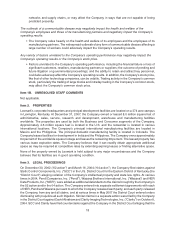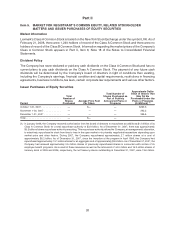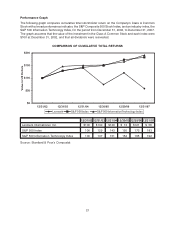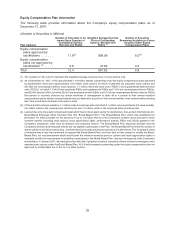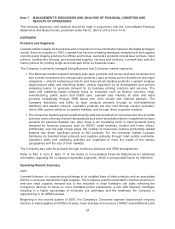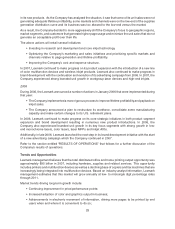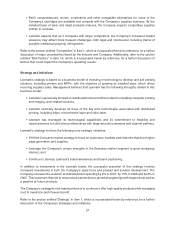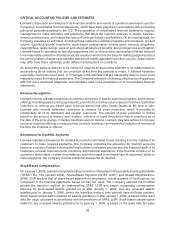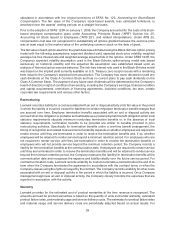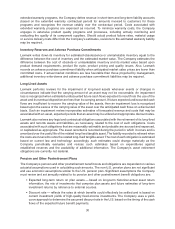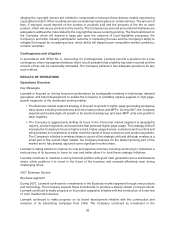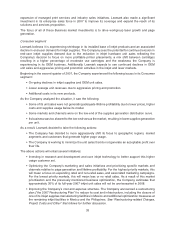Lexmark 2007 Annual Report Download - page 31
Download and view the complete annual report
Please find page 31 of the 2007 Lexmark annual report below. You can navigate through the pages in the report by either clicking on the pages listed below, or by using the keyword search tool below to find specific information within the annual report.in its new products. As the Company has analyzed the situation, it saw that some of its unit sales were not
generating adequate lifetime profitability, some markets and channels were on the low-end of the supplies
generation distribution curve and its business was too skewed to the low-end versus the market.
As a result, the Company decided to more aggressively shift the Company’s focus to geographic regions,
market segments, and customers that generate higher page usage and minimize the unit sales that do not
generate an acceptable profit over their life.
The above actions will entail several initiatives:
• Investing in research and development and core inkjet technology.
• Optimizing the Company’s marketing and sales initiatives and prioritizing specific markets and
channels relative to page generation and lifetime profitability.
• Improving the Company’s cost and expense structure.
In 2007, Lexmark continued to make progress on its product expansion with the introduction of a new line
of color multifunction devices and wireless inkjet products. Lexmark also continued to make progress in
brand development with the continuation and evolution of its advertising campaign from 2006. In 2007, the
Company experienced strong branded unit growth in workgroup laser devices and high-end inkjets.
2006
During 2006, the Lexmark announced a number of actions in January 2006 that were implemented during
that year:
• The Company implemented a more rigorous process to improve lifetime profitability and payback on
inkjet sales.
• The Company announced a plan to restructure its workforce, consolidate some manufacturing
capacity and make certain changes to its U.S. retirement plans.
In 2006, Lexmark continued to make progress on its core strategic initiatives in both product segment
expansion and brand development resulting in numerous new product introductions. In 2006, the
Company also experienced branded unit growth in its key focus segments with strong growth in low-
end monochrome lasers, color lasers, laser MFPs and inkjet AIOs.
Additionally, in late 2006, Lexmark launched the next step in its brand development initiative with the start
of a new advertising campaign which the Company continued in 2007.
Refer to the section entitled “RESULTS OF OPERATIONS” that follows for a further discussion of the
Company’s results of operations.
Trends and Opportunities
Lexmark management believes that the total distributed office and home printing output opportunity was
approximately $95 billion in 2007, including hardware, supplies and related services. This opportunity
includes printers and multifunction devices as well as a declining base of copiers and fax machines that are
increasingly being integrated into multifunction devices. Based on industry analyst information, Lexmark
management estimates that this market will grow annually at low- to mid-single digit percentage rates
through 2011.
Market trends driving long-term growth include:
• Continuing improvement in price/performance points;
• Increased adoption of color and graphics output in business;
• Advancements in electronic movement of information, driving more pages to be printed by end
users when and where it is convenient to do so;
25





